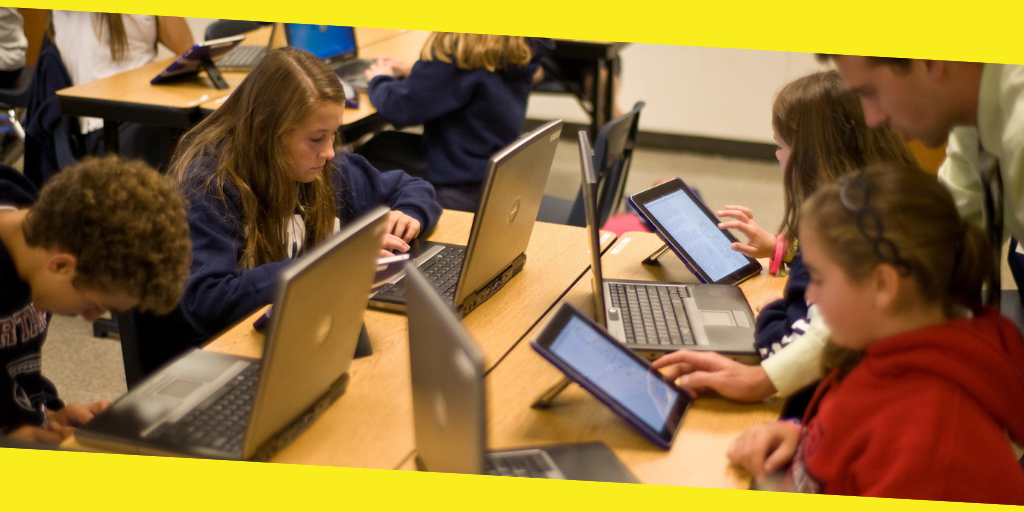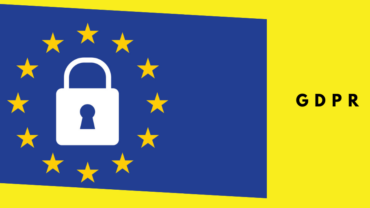Technology Connects with Students
This post was last updated on May 30th, 2022

The use of computer technologies in the teaching process allows to combine the game and educational activities, to make learning interesting and not formalized. Rich graphic, sound and interactive computer capabilities create a favorable emotional background in the classroom, contributing to the development of the student, which he almost does not notice.
Contents
ToggleHow do technologies simplify learning?
Possible directions of pedagogical use of computers in the school are very diverse. Here are several examples:
- New information technologies strengthen the learning motivation owing to the novelty of work with the digital data. The computer helps to reveal the practical importance of the material being studied, to show originality, to ask questions and to propose own solutions.
- Development of personal characteristics. The individual work of the child in front of the computer creates comfort conditions when performing the tasks stipulated by the program: each student has the optimal load, since he does not feel the influence of others.
- Expansion of the possibilities of the received educational information. Modern technology allows not only to recreate the real situation, but also to show processes that cannot be seen in reality.
- Development of skills of self-education and self-control, information thinking of schoolchildren, formation of communication competence.
It is quite obvious that the development of the computer industry provides revolutionary changes in the pedagogical process, based on the transition to technologies that ensure the individual activity of the schoolchild in accordance with his psychological characteristics, the way information is assimilated.
Multimedia computer technology allows replacing almost all traditional training aids. In many cases, such a substitution is more effective. It allows to quickly combine a variety of tools that contribute to a deeper and more conscious assimilation of the studied material, saves the time of the lesson, and saturates it with information.
Therefore, it is quite natural to introduce innovative tools into the modern educational process. Multimedia instruments make it possible to ensure the best result in comparison with other technical means of teaching, to implement the principle of visibility, which holds the leading place in educational technologies. In addition, technology supplements the lesson with the elements of the game, active “learner-computer” dialogue.
Project activities
The child is curious, that is, he wants to know, to touch, to try everything, to study different devices and the principle of their action. At school, creative projects become an effective means of preserving interest in research.
The method of projects is not fundamentally new in world pedagogy. Born from the idea of free education, at present, it becomes an integrated component of a fully developed and structured educational system.
The method is based on the formation of cognitive interests of students, the ability to design their knowledge and navigate in the information space independently, to demonstrate competence in matters related to the topic of the project, to develop critical thinking. This method is always focused on the independent activity (individual, in pairs or groups) which students perform for a certain period of time. The use of information technology makes it possible to organize the project activities of students at the new level of quality, both in the classroom and at home.
Distance education
Today, the technologies of distance education develop very actively. Let’s consider some structural elements of the modern e-lessons:
- lecture (in real time, with control elements, video, audio);
- studying of information resources (the Internet, electronic, paper carriers, text with inclusion of illustrations, video, audio, animation);
- independent work according to the teacher’s scenario (search, research, creativity, etc.);
- conference in the chat or forum;
- collective design work;
- individual project work;
- the use of special training exercises and systems;
- control work (testing, answers to control questions);
- consultation.
Varying the combinations of such “bricks”, the network teacher can create lessons of different types – depending on the age of the children, the degree of their activity and independence, the specifics of the subject, etc.
In the framework of distance learning, the pedagogue leads each student throughout his cognitive path. The special educational environment allows commenting on each work, to give recommendations for correcting the errors, to work with each child until the learning task is completely solved.
An important feature of the special learning environment is that it creates and stores reports on the activities (portfolio) of each child: all works submitted to it, all assessments and comments of the teacher, all messages in the forum.
Technologies connect children, teachers and parents
It’s no secret that today, having a computer at home, many people use it as a toy. But with a help of the innovations, parents can become active participants in the educational process. They should not only help children in the creation of projects, presentations, but also take part in Internet consultations. It is an important lever for increasing the activity of adults, as an established feedback is an opportunity to discuss development prospects. In addition, many parents themselves know a lot and can become consultants in certain areas.
Remote methods allow informing important details to a many busy moms and dads who do not always have the opportunity to attend meetings and various school events. Also, there are mothers – housewives in each class. They chose to raise the child as their main social activity. As a rule, such women are very attentive to the successes of their children. They wait for advice and recommendations from the teacher, ready to get involved in any public affairs and actively manifest themselves in public life.
Through e-mail, pedagogue can announce any events (open lessons, conferences) or highlight the achievements of children. As practice shows, if parents are more aware of what successes have been achieved by children or teachers, their interest in the educational institution significantly increases.
Not only parents but also children themselves benefit from access to the worldwide network. In addition to the information sources prescribed by the curriculum, they can use auxiliary online tools, for example, apply to such organizations as Pro-Papers writing service. The custom papers become especially in demand at the older age, when the student combines education with work and makes a choice in favor of a career. Thus, technologies also connect those who need help and professionals who can provide it.
Recommended For You
What is GDPR?
Most Inside
Most Inside offers high-quality recommendations and valuable updates to enhance all aspects of your life, providing premium guidance and enriching experiences.




